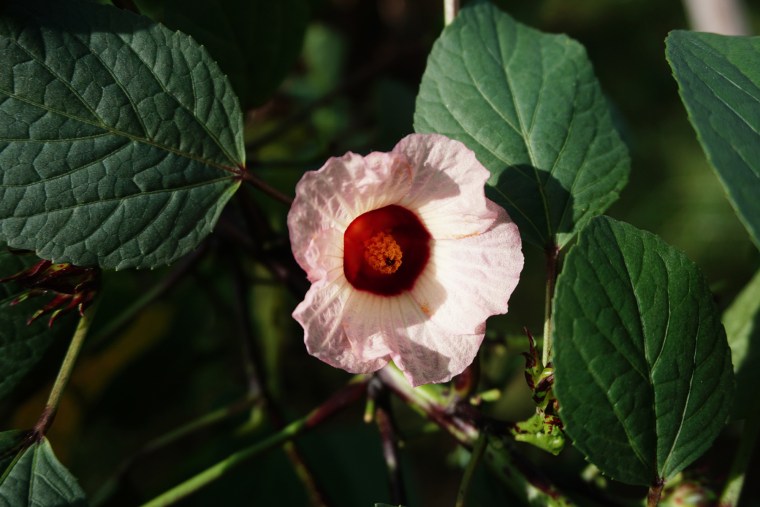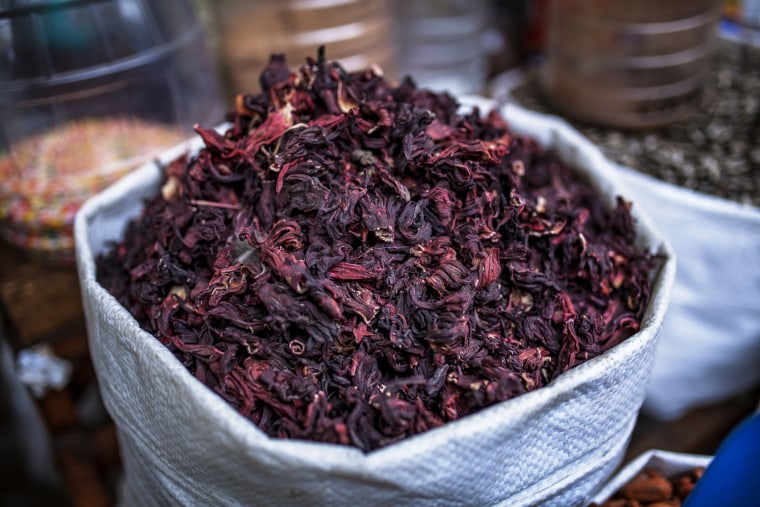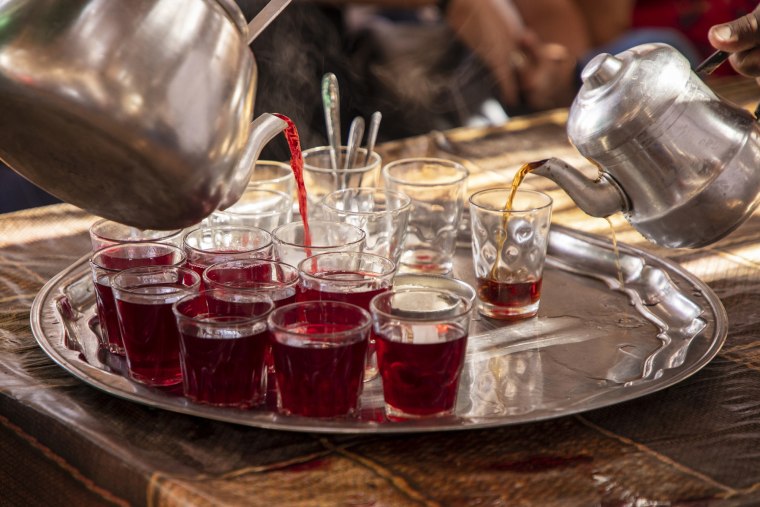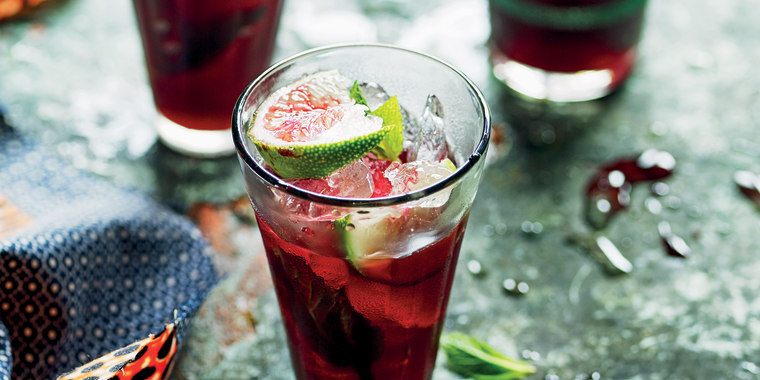I'm sure you've heard of or seen a hibiscus flower before, had it in your tea or even grown it in your garden. It’s very common, as there are over 200 varieties of the flower and they are grown in almost every continent. They range in size and color: Some are white, some are pale yellow and some are blue, but the most common variety has a pink/purple/red hue.
The specific type of flower I am most interested in and have worked the most with is roselle, aka red sorrel, Jamaican sorrel, Indian sorrel or Florida cranberry — not to be confused with sorrel, the herb. It's most likely native to West Africa, and it's grown around the world, especially South and Southeast Asia. A member of the mallow family (Malvaceae), it's directly related to okra — hence why their beautiful flowers are so strikingly similar.

What is hibiscus?
Roselle (Hibiscus sabdariffa) has been traced back to Black populations of western Sudan sometime before 4000 B.C. But today, the hardy plant, which thrives in tropical and subtropical regions, flourishes far and wide — from China and Vietnam to Egypt, Mexico and Nigeria.
More broadly, roselle is used in food preparation, animal feed and traditional medicine. It’s the calyx of the plant, the part of the flower that protects the petals, that are best for use in food and drink preparation, according to Chris Smith, author of "The Whole Okra" and founder and executive director of the Utopian Seed Project in Asheville, North Carolina, in terms of depth of flavor — though the hibiscus flowers can be dried as whole blossoms, steeped and bottled for year-round use.

Today, you might spot it on a menu described as a tart, deep fuchsia-colored herbal tea — zobo or bissap, depending on which West African country or region you’re in. It’s also the mother source of red drink, a staple of African American cultures across the U.S., as well as agua de Jamaica, which is a popular drink in Mexico, Central America, and parts of South America and the Caribbean. In my kitchen and, as I found out recently, a number of South American cultures, the calyx is dehydrated and used to make a stunning finishing salt, which brings out an amazing sweetness in savory foods.
How is hibiscus used traditionally?
Traditionally, hibiscus has many uses — in medicine, food, drink and otherwise. Farmers often use leaves and seeds to feed both people and livestock. Many farmers depend on sorrel for income as it’s known as a cash crop in Sudan, Senegal and Mali. Its seeds are harvested and eaten roasted, used for oil, or when ground, added to soups or sauces. Its leaves and shoots are cooked or eaten raw as a bitter vegetable or dried and ground to be added as sour flavoring for vegetables.
Its bracing tartness lends fresh flavor to foods: When incorporated with simple syrup or sweetener, it finds its way into many sweet treats — as flavoring for jam, jelly, ice cream, tarts, chocolate, puddings and cakes; it also complements savory foods like chutneys, marmalades, butters, sauces and even pickles. In Sudan, it is often cooked with onions or groundnuts.

Fresh or dried, the calyces of the roselle flower are used commonly in hot and cold beverages, including non-caffeinated teas, soft drinks, wine (when fermented) and other drinks to add a kick (for example, during Christmas, it's mixed with eggnog or rum). In Sudan and Nigeria, it is boiled with sugar to make a popular non-alcoholic cranberry drink called zoborodo (zobo for short); in Egypt, it is used to make a tea called karkade.
What are some of hibiscus' potential health benefits?
The flowers and leaves — and seeds and roots, but to a lesser extent — of roselle, when fresh, make a wonderfully tart, citrusy addition to a summer salad and have been used in traditional and herbal medicine for centuries. Hibiscus is a fantastic source of vitamin C, a key vitamin that helps support a healthy immune system. It has also been used in herbal medicine to lower blood pressure, cholesterol and triglyceride levels.
In traditional medicine in the tropics, its extracts have been used to remedy various ailments from toothaches and urinary tract infections to colds and hangovers. Various parts of the plant have also been used for the prevention of diseases such as diabetes, cancer, hypertension and obesity. The fruit acids in hibiscus have been known to work like a natural diuretic, which can help keep your digestion running smoothly.
But take care not to consume too much hibiscus, as studies havefound that consuming it in excessive amounts may cause liver damage in humans. (So, basically, don't drink it every second of the day and you'll be OK.)
What are some ways to use hibiscus in cooking?
The seeds, leaves, fruits, roots and calyces of roselle can be used in a variety of foods and beverages. As previously mentioned, one of the most common ways it's consumed is in tea: The calyx and dried petals are steeped in hot or cold water to produce a tart, cranberry-like tea with a matching deep red-violet color (it’s so bitter, that in Iran, it’s known as "sour tea") which is sometimes sweetened. A great source of pectin, roselle is also used for preserving fruit. A long, cold steep brings out roselle's full color and flavor, whereas boiling hydrates it, making it ideal for infusions.
To start cooking with hibiscus, I recommend using my recipe for Sobolo (Sorrel Juice) or this recipe for Hibiscus Flower Enchiladas.
These dried flowers can be found in certain health food stores, often labeled "flor de Jamaica," but before you buy, please make sure to find out if your money would be going to those who have been cultivating this amazing plant for generations. And if you don't feel like making this magical red drink yourself, you can buy it from Berry Bissap, which ships its spiced hibiscus tea nationwide, and Teranga in Harlem, New York City, which has bissap on its menu.


